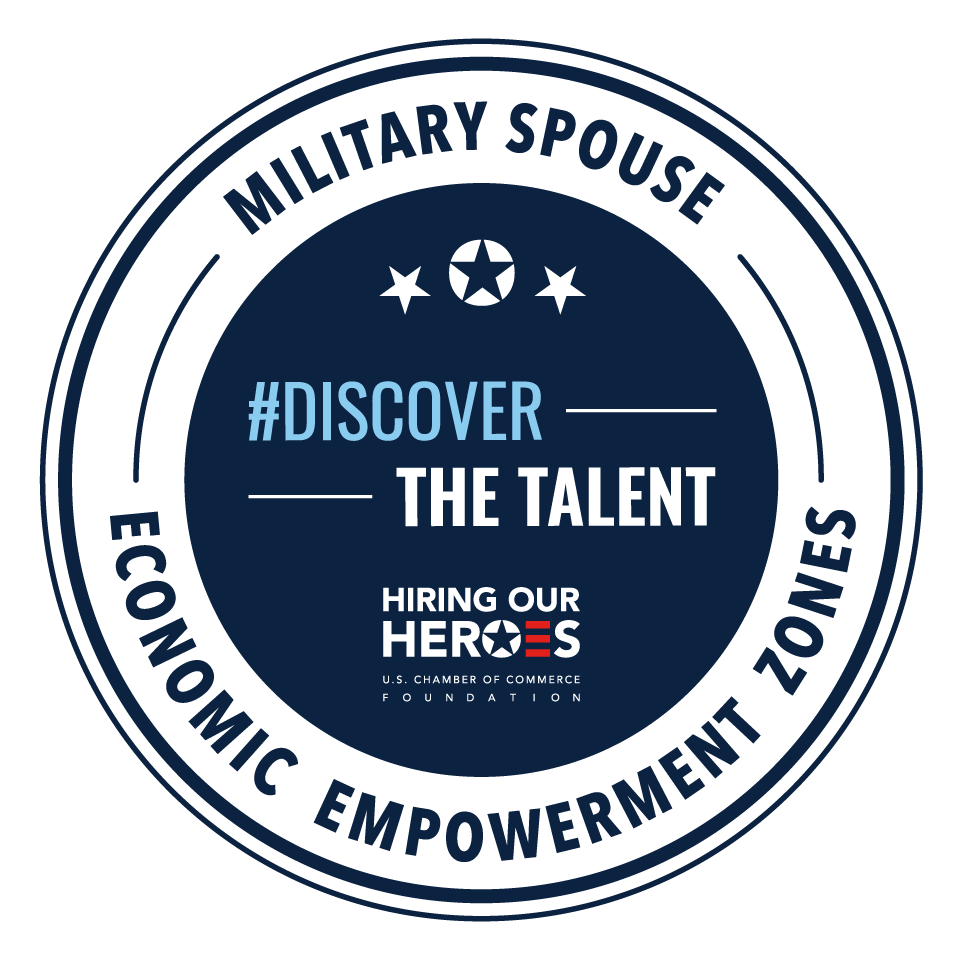20 Tips to Take Your Career/Business to the Next Level
 Developing a successful career and building a flourishing business have many similar steps. While you are personally developing your experience, education, and leadership skills as an individual, businesses are constantly evolving through their experience, staff training events or courses, and the growth of leaders within the company.
Developing a successful career and building a flourishing business have many similar steps. While you are personally developing your experience, education, and leadership skills as an individual, businesses are constantly evolving through their experience, staff training events or courses, and the growth of leaders within the company.
As we’ve highlighted in our January 2020 blog, Powerhouse Planning is providing a wealth of knowledge to bolster everyone’s 2020 success, publishing a new article each month that gives 20 tips on a new subject. This month, we’re focusing on 20 tips to take your career and/or business to the next level.
Twenty tips may feel like a lot; it may be overwhelming at first. To ease your mental state, these 20 tips are broken down into four easier-to-digest categories: development, habits and planning, leadership, and marketing.
Whether you are taking your career or business to the next level in 2020, we want you to know that we support you in your goals!
Development
Tip #1: Become a proverbial sponge.
Kids are often referred to as walking, talking sponges, and for a good reason. They are constantly in a state of learning, which is something many businesses and individuals should take a lesson from. Lifelong learning doesn’t mean collecting degrees, though if that’s you, I’ll tip my proverbial hat to your determination. Information is a constant in our digital age. Being a lifelong learner can mean researching the areas that mean the most to your company, like target audience, marketing research, or education and experience requirements for the dream job you’ve always wanted.
Tip #2: Create a growth strategy.
Whether you are planning for a project management role, a certain caliber of income, or year-over-year growth projections, create a growth plan. Personal development plans are similar to the business version of growth strategizing. It’s the process of creating an action plan based on awareness, values, reflection, goal-setting, and planning for personal development within the context of a career, education, relationship, or for self-improvement [1]. Both versions have what equates to a mission statement, strength or competencies, education and training, stages or steps, and metrics to indicate a measurement of time and success.
Tip #3: Cultivate a portfolio.
A well-thought-out, beautifully designed portfolio is more than the perfect image and glowing testimonials, although those are key aspects. Most small businesses aren’t aware they are building a portfolio through the use of past client folders or in-depth interaction archives with vendors, prospective clients, or products. In many cases, these portfolios can be for the creator’s eyes only, a reference guide of what you’ve done, how you’ve improved, and how your current client, project, etc. make a difference in the grand scheme of things. As an individual working on your career, a portfolio early on may consist of papers or projects from school you’re proud of, but it won’t stay this way as you branch out in business. Consider portfolios of personal accomplishments as well, like memory books. We live in a global age that highlights the importance of diversity, and travel may be your key to developmental success.
Tip #4: Analyze for future growth.
Reflection and self-awareness on a personal or business level are paramount to success, which is where a SWOT analysis comes into play. If this is a new acronym for you, it stands for Strengths, Weaknesses, Opportunities, and Threats. The best part of SWOT analyses is that they are versatile. Analyze your professional status strengths and weaknesses, what opportunities you face or may face in the future, and what threats may emerge. Take this into the academic realm for completing a semester of classes after being out of the classroom for years, or when you’re trying a remote career path for the first time. In business, SWOT analyses are used in every facet of a business, from initial conception to communication strategizing, marketing, fiscal planning, or staff training in a small, medium, or larger-sized company. SWOT analyses don’t need to be in-depth, but you’ll find that after you start, you may spend much longer than intended mapping out the four sections.
Tip #5: Make someone’s day.
In business, Corporate Social Responsibility (CSR) plans may appear to be a potential revenue drain initially but can pay off exponentially long term. Look at companies like TOMS Shoes, which made millions of dollars with their “buy one, give one” policy or a “one-for-one” approach. This policy launched the small company into stardom early on, and though the company faced bankruptcy rumors in 2015, they’ve pulled through this year by broadening their CSR approach and updating it to current social responsibility movements, while never forgetting the one-for-one policy that set them apart from all the other shoe manufacturers [2]. Don’t worry, though, if you’re building a career and not a business. Sometimes the smallest acts of kindness can make the biggest impact. Consider offering services pro bono to someone in need to add to your portfolio or professional references. Don’t stop with these CSR suggestions on a personal, local community, or global scale, and perhaps you’ll find a market for a service or product you can turn into a company all your own.
Habits and Planning
Tip #6: Learn to take risks.
Risk-taking may sound potentially detrimental to your health or your business’s well-being, but in fact, risk-taking helps you face your fears and meet challenges. As an individual, it helps you learn new skills, builds self-esteem, empowers you to continue to try new things, and creates opportunities. Risk-taking breaks you out of your comfort zone and allows change to happen. In business, managing risk and determining when to take appropriate amounts of risk are major aspects of both study and specialization.
Tip #7: Embody mindfulness.
Mindfulness is a state of active attention to the present moment, specifically observing your thoughts and feelings without judgment [3]. It is important to acknowledge both the good and bad moments in business because lessons can be learned from every situation. You can start right now by closing your eyes and taking a minute to focus on your breathing. Take a moment to sort through each thought that surfaces before dismissing it. If your mind focuses on a specific upcoming event, try not to feel the emotions around the situation, but focus on the details relating to the deadline, project, goal, etc. Your determined focus may bring new insight.
Tip #8: Be realistic with time and resources.
Our perception of how our time is spent may be skewed. Whether you’re running a business or working toward career goals, time management is often one of the more challenging problems you may encounter. You may believe that you spend about 30 minutes answering emails each morning, but the reality may be much different. One way to establish honest representations of time is to track how you use your time at work or in a business building by downloading an app such as Roadmap, Time Doctor, or Calendar [4]. These apps are not only wonderful additions to team settings in the workplace, but can also help analyze time usage and make appropriate changes to improve productivity.
Tip #9: To-do lists can be your friend.
It’s true—to-do lists don’t always seem like a friend, especially if your inbox is swamped, your team has multiple approaching deadlines, and you walk into work to find a new pile of paperwork on your desk. In business, whether you’re the CEO or a staff member, to-do lists can feel like the enemy, but they do not need to be. Before you leave work each day, write down the top three to five tasks that need to be completed the next day by order of importance. Seems pretty easy, but sometimes deciding which tasks need to be completed first can take longer than you expect. Don’t fret. You’ll get faster at analyzing the priority list, and if you continue to struggle, create a priority matrix [5]. When you walk into the office—remotely or otherwise—you already have your daily starting point. If a couple of additional items show up in your inbox overnight or on your desk in the morning, add them to the priority list. Start at the top and work your way down. To-do lists can change your productivity levels when you simply optimize how you use them.
Tip #10: Eliminate half work.
This may sound like a silly concept, but we live in an age of constant distraction, which has caused us to split our focus between what should be our priority and everything else. It is very common to find ourselves balancing emails with messages and to-do lists while also trying to accomplish other tasks, like preparing for a meeting. A strategy that may work for you is to block [6] a certain amount of time in the morning and afternoon to minor items. During time blocks, ensure that the task at hand is your only focus, and you’ll find your productivity and time management naturally improve.
Leadership
Tip #11: Learn to delegate and outsource.
There is a reason these skills are often hard to learn. For some, it can be difficult to let someone else do work that they used to do. For others, they don’t have the time to train someone else to complete outsourceable tasks. The important consideration is that both delegating and outsourcing are time-saving devices that every individual and business leader should master. You can hand over responsibilities to team members who are qualified or hire outside to a contractor or freelancer.
Tip #12: Lead by example.
Remember back to show and tell in school, where each child gets to share something during circle time? Each month was a new theme, such as art, summer vacation, pets, and so forth. Leadership is about setting the example—showing others, not just telling. If you want to set an example for punctuality, make sure you get to work on time or early. If ethical behavior is paramount to your company, make sure as the CEO you lead by example both at work and in your personal life. Treat everyone—in-person or online—with courtesy and professionalism to set the tone for yourself, and your employees will follow.
Tip #13: Communicate effectively.
Communication is more than what is spoken. In fact, 55% of communication is nonverbal, 38% is through tone of voice, and only 7% is verbal [7]. As a professional or a business leader, it is important to be aware that the way you stand, your tone, and how you use your hands all affect how others hear and perceive your message. This is especially true as the world continues to diversify, and cultural perceptions, norms, and personal biases begin to play a part in how we communicate with those around us [8].
Tip #14: Ensure meetings are productive.
In this fast-paced age, time certainly feels like money. Naturally, it may feel essential to limit tangents and other time-wasting aspects of meetings. At the beginning of a meeting, state the goals regarding a decision or tasks that need to be accomplished [9]. If you use PowerPoint presentations as a professional, in business, or as a leader in your field, use more pictures than words and be sure to end the presentation and meeting in general with a summary of the decisions made and the next steps for the group. Another wonderful tip for boosting productivity and energy within the group is to take a small group outside on a walk or somewhere outside to sit. If your meetings are online, let everyone know what the agenda is ahead of time so the meeting can begin without delay and save time for other offline tasks.
Tip #15: Be emotionally aware and present.
Business is ultimately about relationships between people. To make a meaningful connection, you need to be emotionally intelligent as a leader and professional. It is essential to be sensitive to different points of view, different backgrounds, and experiences. Sometimes it is a challenge when the business world pushes us to think solely about what is best for the team, company, or brand, but don’t forget to have a heart. Be mindful that your tone in a phone conversation, Zoom call, or conference meeting can say more than the words you speak [10].
Marketing
Tip #16: Follow the 80-20 rule.
The Pareto principle is also known as the 80-20 rule, where 80% of results come from 20% of the effort put in [11]. This principle is commonly used in sales, as 80% of sales are typically from about 20% of the customers. In content marketing, another common use is that 80% of content should be educational to about 20% advertising or promoting a product, service, etc. In an opposite view, 20% of a blog’s content generates 80% of its traffic. The use of this principle is unlimited, and it applies to every aspect of life. Consider it while growing your career and you may be surprised what you uncover.
Tip #17: Build a community.
If you wish to grow your career, surround yourself with those who challenge you, expand your thinking, and support you. Create a network of like-minded people in your field on LinkedIn to create meaningful networking connections and vouch for one another’s skills. Genuine expertise draws other experts, so set yourself up with a blog, a portfolio, or another format that showcases your expertise and share with your community and those you meet. These strategies apply equally in business, especially when marketing a service or product. Create a community of people who believe in your brand, your company, your products or services, and you’ll grow naturally and with meaning.
Tip #18: Remember who you are.
Everything you communicate, either verbally or through body language, is sending a message to those around you. The same way a strong company culture projects its brand, protect your reputation as a professional by keeping a level of mindfulness about the words you choose and the actions you perform. You know yourself best. Start to set yourself apart as a leader within professional communities or local region and find out what can be accomplished.
Tip #19: Establish a web presence.
Professional contractors, businesses, individual brands, and everyone in between have a form of web presence these days. Traditional company/business websites, a blog, or social media channels are commonplace. In fact, 90% of brands use social media to increase brand awareness, and astoundingly most businesses maintain between four and ten social profiles [12]. You can use your online presence like a portfolio or provide guides/services of your own. Almost anything is possible with a shared hosting account, a domain name, and a website template from the top website design companies like WordPress or Squarespace, whether you’re an expert or not.
Tip #20: Don’t forget the root of business.
The world has become a globally connected technological network of opportunity. The result often feels like an extremely fast-paced world, but it is important to remember that people buy from people and that won’t change. It is easy to get lost behind your laptop and communicate almost entirely via the web, especially if you are working remotely or run a remote-based company. There is something to be said for the business conferences that pop up throughout the year that bring professionals and businesses together to network in person, during informal or formal meetings.
2019—Our Best Year Yet
Yes, that is indeed what Powerhouse Planning President and Founder Jessica Bertsch dubbed our 2019 year: the best one yet! We continued to show strong growth with a dynamic team and clients we truly enjoy. We paid about 31% more to our freelance team members in 2019, meaning we created even more jobs. Even though growth doesn’t always come easy, we took the opportunity to learn how to manage that small business growth as well as celebrate it. After all, there’s no point in having an experience if you don’t take time to reflect on and learn from it, which is exactly why we’re thrilled to be where we are. As Jessica says, “’Coming’ to work truly feels good!”
While we are grateful for our new and continuing clients and our amazing freelance team members, we’re most proud of how we’ve grown our Share the Goodness campaign. As many fans of Powerhouse know, Jessica is committed to enriching the world with 10% of Powerhouse’s annual revenue. 2019 allowed us to reach even more deserving people and organizations. So, thank you to all who have helped us “Share the Goodness.” We know 2020 will be even better.
Speaking of 2020, we are thrilled to be embarking on a new year of challenges and opportunities. We’re continuing to grow our grant-writing services and retainer-based contract clients. Stay tuned as we have some exciting announcements in the works, like really neat strategic partners and new FREE resources. Our year will be jam-packed with resources that will help you grow both individually and professional. Because it is 2020, expect to see a whole lot of monthly tips (let’s say, oh, 20 per month) on everything from how to take care of yourself and your small business to resources you never knew you needed.
As one of our valuable team members said, “With strong leadership and steadfast commitment to continually grow, improve, and provide for our clients,” 2020 is shaping up to take the Best Year Ever crown. So if you haven’t checked out our website lately, take a few moments to do so now. We’re constantly adding new resources and expanding our offerings. We’d love to show you what we’ve been up to and help you with your business needs.
Taking Care of Business – Jessica Bertsch, President of Powerhouse Planning
Jessica Bertsch married her “Coastie” (that’s U.S. Coast Guard) husband, Fritz, 14 years ago, and as a family, they have moved six times. Only now, each time Jessica moves with her husband’s career, she takes hers with her—a blessing that she worked hard to create for herself just over seven years ago when she started Powerhouse Planning. Jessica’s Powerhouse has since grown to become an unwaveringly talented freelance team at the forefront of providing virtual workforce solutions for client businesses.
Jessica and Fritz have three children, including Quint (8), Gracie (4), and Auvie (3). When Fritz is underway with the Coast Guard, Jessica handles the household and the kids, along with keeping her business running successfully. She definitely doesn’t want to make this sound like it’s all a piece of cake, though—and that if you’re not doing it all and still feeling “balanced,” then you’re doing it wrong. No way. Jessica remains firmly rooted in the reality of the hard work and the personal resolve involved. “My husband has been at sea over a quarter of our marriage, so I’ve done a lot of parenting, and a lot of building a business, solo,” she says.
“I want people to be excited about where they are in their journey and to always be improving.” – Jessica Bertsch
Founder and President, Powerhouse Planning, LLC
This month, Powerhouse is focusing on the topic of self-care for freelancers and business owners. So, how does a CEO, military wife, and mother of three take care of herself?
Jessica says, “I feel like I’m the healthiest that I have been since I started Powerhouse, but it is ongoing. I have done everything you read about. I’ve set office hours—I used to be the lady who took the laptop to the couch when we were watching TV and relaxing. I set more realistic expectations for myself—the other side of this is that I value other peoples’ time and space. It’s okay to slow down, because of the way our culture is. Because of the way our virtual workforce is.”
Jessica also works to practice self-care by staying true to her boundaries, and she starts off every morning by reading a devotional to “get started on the right focus every day.” When asked if she uses reminders or time organizers to help her keep the most important things in focus, she laughs, “Yes! All the things. People would be overwhelmed if they saw my life, ‘for real.’ I am crazy organized, and I have to be, because of how our life is.” She also gives credit to her mom, who flies in and helps out when Fritz is at sea.
What other self-care habits help Jessica feel balanced, healthy, and put together? “A girlfriend once told me, ‘Jess, you’re kind of a “yes” person.’ And I am. Because someone told me that and called me out on that, I’m kind of aware that I don’t have to volunteer for everything,” she says. And now, Jess says, “I take a moment, whenever I do say ‘No,’ to feel proud of myself, because I’m being balanced on my priorities.” (more…)
Did You Know?
January is typically a month full of resolutions, goals, and aspirations for the coming year. It makes sense given we’re leaving the old behind and beginning anew. What better time is there to take a moment for some self-care? Let’s face it, freelancers and small business owners might be some of the worst offenders when it comes time to “pamper,” but that doesn’t mean there aren’t some things we can do that are good for business and might just make our lives a little easier, too.
Check out some of our checklist resources. New to grant writing? Attending any conferences this year? Have a resolution to work on team building? Let Powerhouse save you some time and utilize the checklists we’ve already built for you. Or take a moment to review the services we offer. Maybe the best way you can help yourself this year is to let us handle some things that free you up to be the best you can be professionally. Whatever you decide, take some time to focus on you, your business, and how 2020 can be your best year yet.
Five Tips to Host an “Influencer” Party
Part of self-care as an entrepreneur is celebrating your success and having fun by engaging with your customers and fans. This new year, why not host a different sort of party, where your team can have a blast while also promoting your brand at the same time.
Influencer events, where you invite social media influencers to sample and preview your products, are becoming one of the biggest trends to grow your brand with like audiences. With more than one billion active users each month, your company has an opportunity to target niche audiences and build brand loyalty with Instagram influencers.
But to make your party successful, you’ll want to follow these top five tips.
#1 Pick the right influencers.
The first step is to find the micro-influencers, people with fewer than 20,000 followers, who really connect with your brand. They must have a genuine interest in your type of products and a history of showcasing similar content. One successful example is when a Canadian ski resort wanted to attract new visitors, they used a top adventure photographer to showcase their resort on Instagram and with short Facebook videos. His stunning photos showed an authentic “insider secret” to escape the crowds, reaching the resort’s target audience of travelers.
#2 Create an Instagrammable invite.
When you send your invitation, make it creative to get the influencer excited about coming. If it’s really good, then they might even post in advance about the event to get their followers amped. For example, when a new outside entertainment venue opened in Tampa, Florida, the developers sent influencers “invite packages” that included Polaroid cameras. Influencers used the old-fashioned cameras to take preview shots of the park, Sparkman Wharf, and post them.
[More tips on upping your “influencer” game here!]
#3 Location is everything.
When meeting with your team, think of the most visually interesting location to host your event. Is there a hip rooftop bar, a new, trendy hotel lounge, or even a cruise ship where you could host your party? Keep in mind that you’re trying to create the best photo shoot opportunities. Think about places with great lighting, and make sure there’s reliable Wi-Fi and outlets to keep your influencers connected and charged up. An example is Instagram’s own annual top influencer event, Instabeach on Malibu’s beautiful strip.
#4 Little details matter.
When you invite your influencers, make sure you clearly explain to them what they should do. Do you want them to make one post about the event and by what timeline? Choose a single, simple hashtag for your party and print it on as many outreach and promotional materials as possible. This will encourage others to use the hashtag and create an easy way for you to track your success.
#5 Have fun!
Think of creative games and contests to keep influencers engaged during your event. Plan to have great food and snacks as well. The key is to make sure that everyone has a good time so that your team feels good about the event and your influencers leave with a positive impression of you and your brand to share with the masses.
Fine-Tuning Your Communication Skills
For entrepreneurs, our increasingly technology-driven society can be a blessing as unique ideas, products, and services can reach clientele and specific market niches easily. However, when considering self-care and needed time away from one’s desk, constant communication through email, texts, and social media can also be a source of stress. Each business needs to make a plan for approaching communication among staff, clients, and the public to protect not only your business interests but also your mental and emotional health.
Set limits and expectations for communication.
Smartphones are able to keep us connected to our teams and clients, but it’s important to understand both spoken and unspoken communication rules for the field you work in. Make firm decisions as a staff as to how long is acceptable to wait to respond to an email, text, or phone call during the workday and how you will handle away messages or direction to a coworker when out of the office. Make sure rules are clear for how those out of the office are allowed to set limits on responding.
Be present with those in front of you.
While setting rules for being in contact with your team is important, it’s also good etiquette to know when to put away the phones. Make sure staff understand that when you are at a work function, such as a dinner meeting or presentation to a new client, it is important to show the people you are in front of that they are a priority and put communication with others away.
Use “reply all” sparingly.
Another possibly dangerous area of constant communication to navigate is “reply all” emails and group texts. Group communication can function to let everyone working on the same project know important dates, deadlines, and other information, but it can also cause headaches. Almost everyone can share a story of being left to scroll through unnecessary comments and emails from people who should have learned to talk directly to one person. Or, on the other hand, missing an important detail because someone replied only to the sender. Be mindful of people’s time and overrun inboxes and learn to differentiate the information that should be for the whole group versus only for a select few. (more…)





